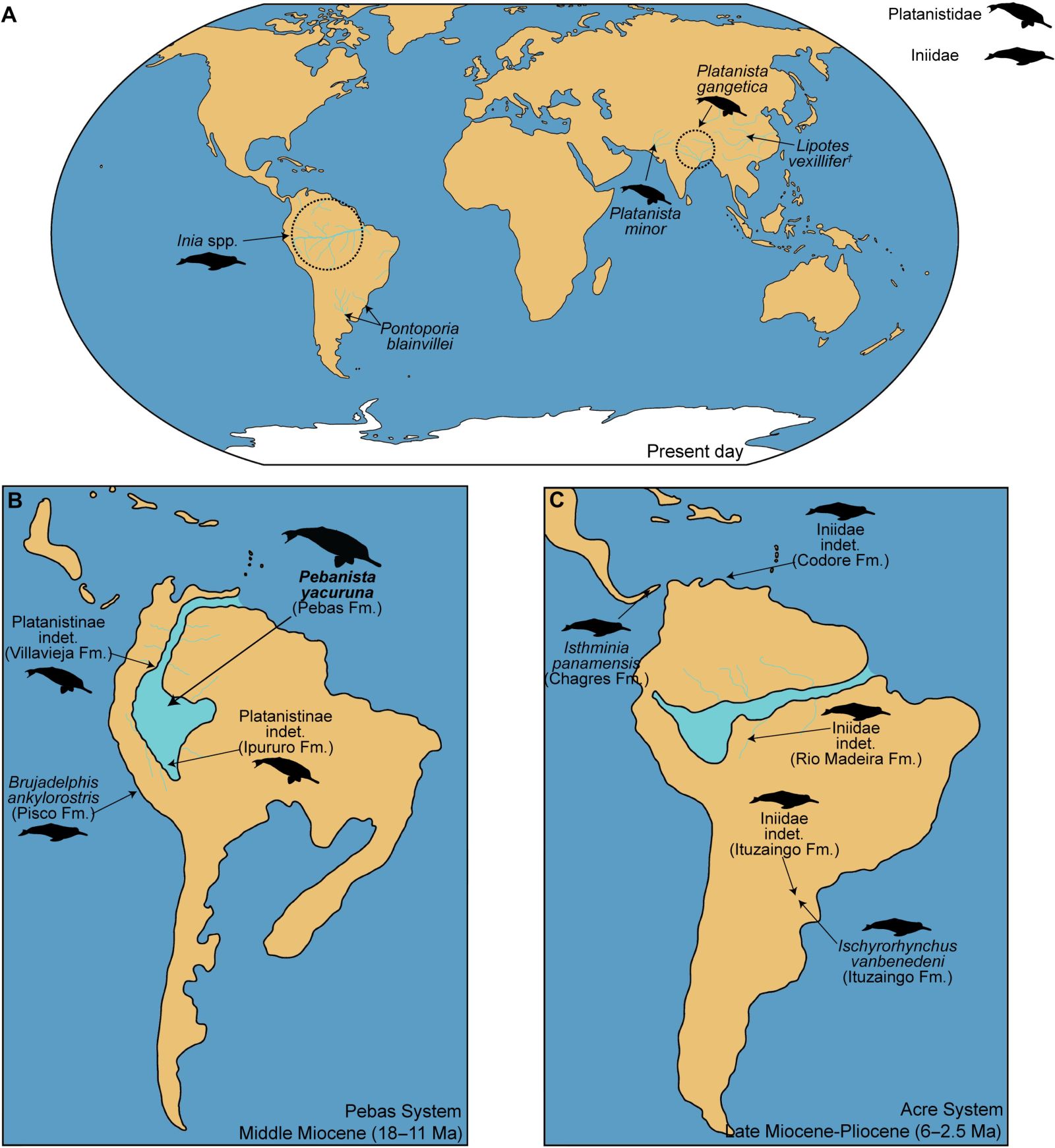A giant dolphin discovered in ancient Amazon
Follow us on Google News (click on ☆)
This dolphin, named Pebanista yacuruna, lived around 16 million years ago and measured between 9.8 and 11.5 feet (3 and 3.5 meters), making it the largest known river dolphin to date. The species' name is inspired by a legendary aquatic people of the Amazon. Interestingly, its closest living relatives are found among the river dolphins of South Asia.

Artistic reconstruction of Pebanista yacuruna in the murky waters of the proto-Amazonian Peru.
Credit: Jaime Bran
Today's river dolphins are among the most endangered cetaceans, with several species critically endangered. Pebanista belonged to an ancient group, the Platanistidae, which thrived between 24 and 16 million years ago. The discovery suggests that these marine ancestors adapted to the prey-rich freshwater ecosystems of ancient Amazon.
The Amazon region, 16 million years ago, was dominated by a vast system of lakes and swamps, very different from the current landscape. With the evolution from the Pebas system to modern Amazon, the ecological niche of Pebanista disappeared, leading to its extinction. This allowed other species, like the ancestors of today's Amazon river dolphins, to exploit new habitats.
The study, published in Science Advances, sheds new light on the evolution of freshwater dolphins, revealing that Pebanista shared unique characteristics with the river dolphins of South Asia, including facial bone structures related to echolocation. This ability is vital for navigation and hunting in turbid waters, where visibility is low.

Schematic representation of the region highlighting the presence of epicontinental waters in South America (pale blue). Existing geographical ranges of the Amazon river dolphin Inia and the South Asian river dolphins Platanista (A). Distribution of fossil records of Iniidae/Platanistidae in the Pebas system from the Early to Middle Miocene (B) and the Acre system from the Late Miocene (C). Modified from Benites-Palomino et al.
Fossil hunting in the Amazon is extremely challenging, with favorable conditions only during the dry season. The type specimen of Pebanista was discovered in 2018 during an expedition of over 186 miles (300 kilometers) along the Napo River, led by Rodolfo Salas-Gismondi's team. This discovery represents a significant contribution to our understanding of the past diversity of freshwater ecosystems and the evolution of cetaceans.
This research underscores the importance of the Amazon not only as a current reservoir of biodiversity but also as a key witness of past ecosystems, offering unique insights into the evolution of life on Earth.